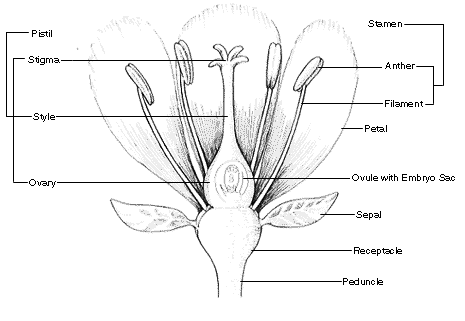Avocado fruit set is lousy up and down the coast this year. The trees were flowering in many places from January to June. They kept trying to set fruit, but nada. According to Daniel Swain at UCLA Weather West, this was the coldest winter on record without freeze and a long drizzly spring with little sun - cool days and night time temperatures. Cold day time temps mean poor pollinator activity. Honeybees just weren't working much. Then if pollen is transferred to the female stage flower, it takes 48 hours of above 50 deg F for fertilization - the deposition of pollen on the stigma and growth of the pollen tube down the style to the ovule. If the temp at night drops below 50, the process stops and the ovule never gets fertilized. So it doesn't matter if day time is warm and the pollinators are working, if it gets cold at night, the fertilization process stops.
So that's exactly what happened. Cool days for poor pollination and then cold nights for fertilization. It didn't matter how hard the tree flowered, it just wasn't the right weather. It didn't matter if you sprayed gibberellic acid. The weather was just not right for fruit set this tear.
And this should set off alternate bearing for next year if we have the right weather conditions. So you might think seriously about pruning because there could be a branch breaking crop set next spring – if the weather is right.
Interestingly,just as an observation it looks like GEM and Lamb Hass right next to Hass did set fruit just at the end of the flowering period. So there is some difference in varieties to weather conditions.
Image from American Museum of Natural History
The cool/moist weather has also created conditions for anthracnose and alternaria in fruit which causes problems for the consumer, but also caused early fruit drop and color change in the fruit on the tree. The trees just can't hold on to the fruit as one normally expects. It's a tough year for avocado growers. In the Central Valley all the stone fruit is late by almost a month. Apricots and cherries are just coming in season when they should have been available in late May.
Weird and Maybe we are going to have to get used to it.
Read more about the Basics of flowering
pollination - movement of male pollen to female stigma
fertilization - growth of pollen tube down to stimulate ovule
